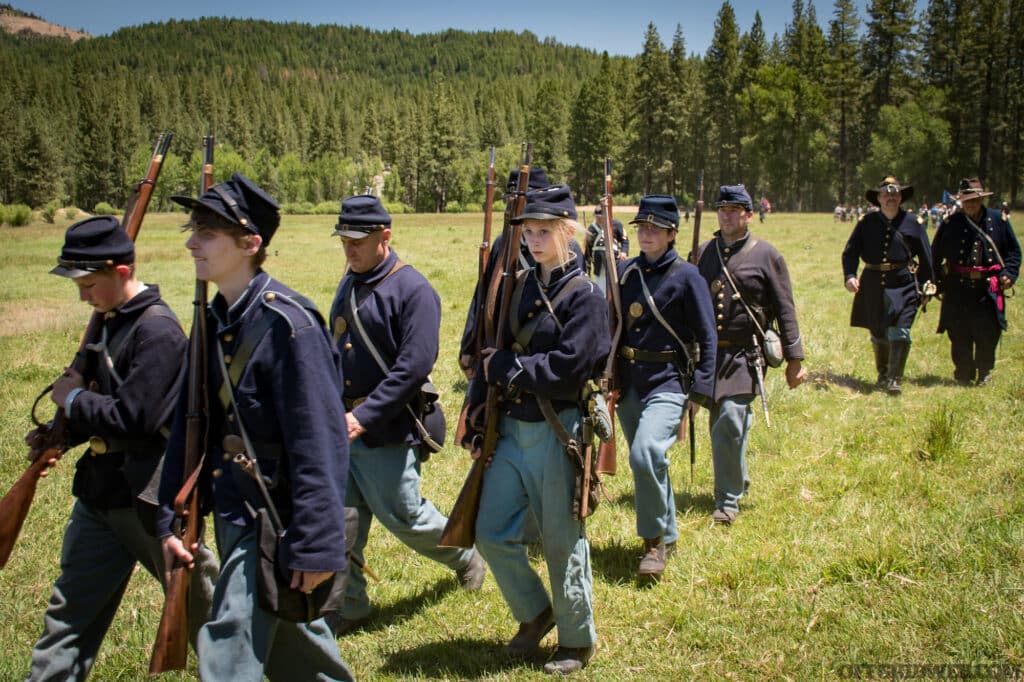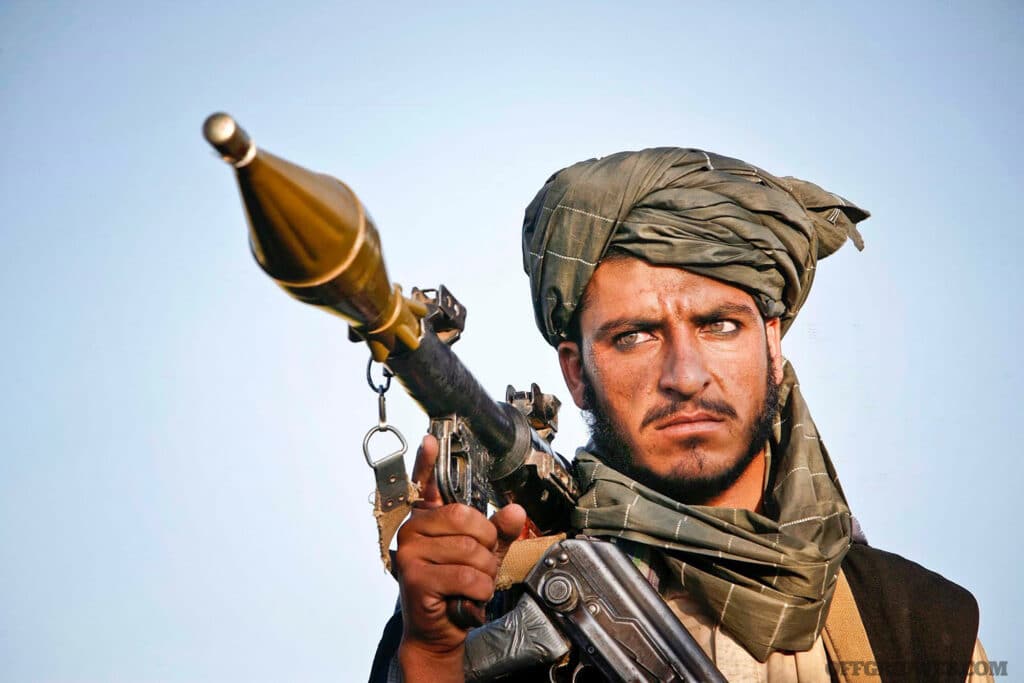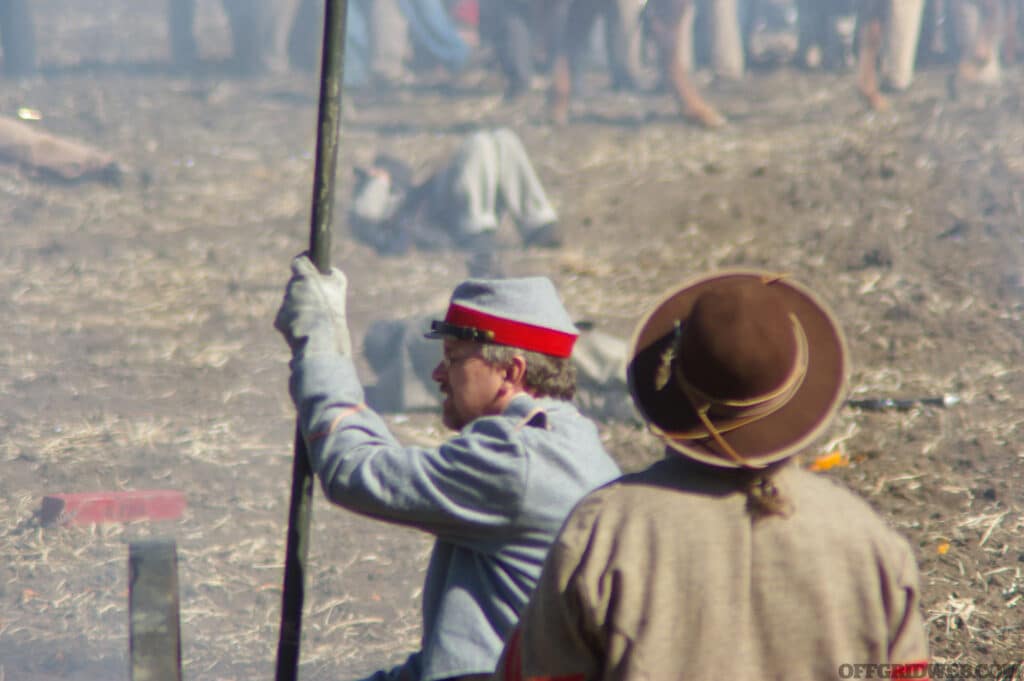RECOIL OFFGRID Preparation Unconventional Battles: Impact of Guerrilla Tactics from the 1860s to Modern Conflicts
In This Article
Picture this: while vast armies in blue and gray faced off on well-known battlefields, a different, shadowy war raged across the South. This wasn’t the orderly combat of soldiers in formation but a brutal, chaotic struggle of ambushes, surprise raids, and irregular tactics. From 1861 to 1865, guerrilla warfare tore through the Confederate states, leaving a profound mark on the American Civil War’s outcome. By looking into the savage world of the Confederate guerrillas and Unionist fighters of the American Civil War, we can see a pattern that continues to repeat itself into the modern era.
As the first shots of the Civil War echoed in April 1861, a different kind of warfare began to unfold across the South. With the shadow of Federal invasion looming, civilians from the Midwest to the Deep South quickly formed guerrilla bands. This mode of fighting offered a sense of freedom and the ability to protect one’s home and family, unlike anything the formal Confederate army could offer.
The guerrilla fighters were a diverse lot. The majority were Bushwhackers, notorious for their ambush tactics and lack of formal uniforms, making them indistinguishable from civilians. This ambiguity sowed confusion among Union forces, who struggled to identify friend from foe. Contrastingly, the Confederate Congress legitimized another form of guerrilla, the partisan rangers, through the Partisan Ranger Act of 1862. These fighters, though still employing irregular tactics, wore Confederate uniforms and operated under a semblance of military structure.

The hit-and-run attacks, ambushes, and sabotage operations that characterized Civil War guerrilla actions are mirrored in the operations of modern guerrilla fighters across the globe. These tactics exploit the vulnerabilities of conventional military forces, relying on speed, surprise, and intimate knowledge of the local environment. Today, guerrilla groups and insurgent forces continue to use these methods to challenge larger, better-equipped armies, showing the enduring effectiveness of irregular warfare tactics.

Above: Soldiers on the march were easy pickings for Guerrillas.
Civil War guerrillas employed a range of tactics that leveraged their deep familiarity with local terrains, their ability to blend in with civilian populations, and their willingness to engage in warfare that often defied the conventional rules of engagement of the time. Let’s look into some of these specific tactics to understand how guerrilla warfare adds a complex layer to warfare.

Above: Today’s modern guerrilla fighters employ the same tactics, but with upgraded weapons and gear.
During the American Civil War, the Union army faced a conundrum in dealing with these guerrillas, especially the elusive bushwhackers. The Lieber Code of 1862 attempted to define the legal standing of guerrillas, declaring bushwhackers as illegal combatants. However, this did little to stem their activities, as the guerrillas’ knowledge of local terrain and surprise tactics made them nearly untouchable.
Guerrilla warfare was not just a military challenge, it was a deeply personal conflict, pitting neighbor against neighbor. In areas like Missouri and Kansas, the violence became especially barbaric, with figures like William Clarke Quantrill and “Bloody Bill” Anderson leading raids that were more akin to massacres than military engagements. These acts of brutality highlighted the savage nature of guerrilla warfare, where the lines between combatant and civilian blurred.
Just as Union forces had to adapt to the guerrilla threat by developing counterinsurgency tactics and strategies, modern militaries face the challenge of countering irregular forces without alienating the civilian population. The difficulty of distinguishing between combatants and non-combatants, the necessity of gaining local support, and the challenges of operating in often unfamiliar terrains are challenges that modern forces continue to contend with.

Above: The psychological impact of carnage a band of guerrilla fighters can inflict is an effective way to demoralize opposing forces.
The guerrilla war’s impact on the Civil War was profound. These irregular fighters harassed Union forces, cut off supplies, and spread fear and demoralization. In response, Union commanders adopted “hard war” tactics, holding civilians responsible for guerrilla actions, which only further escalated the violence.
For years, the role of guerrillas in the Civil War was overshadowed by the battles fought by conventional armies. However, recent scholarship has begun to shed light on the importance of this irregular warfare. Guerrillas, whether bushwhackers, partisan rangers, or Unionist fighters, played a critical role in shaping the war’s outcome and the society that emerged from it.
The Lieber Code’s attempt to establish guidelines for the treatment of guerrilla fighters foreshadows contemporary efforts to regulate warfare and protect human rights through international laws and conventions. The question of how to deal with non-traditional combatants within the framework of international law remains a contentious issue today, reflecting ongoing debates about the nature of combatancy and the rules of engagement in irregular warfare.
Guerrilla warfare of the American Civil War was a complex, brutal conflict that ran parallel to the larger, more famous battles. It was a war of shadows, where the fighters were as likely to be your neighbors as they were enemy combatants. This aspect of the Civil War reminds us that the impact of the conflict extended far beyond the battlefields, touching the lives of countless individuals who fought their own wars in the shadows of history.
Echoes of Civil War guerrilla tactics in modern irregular conflicts underscore the timeless nature of certain military strategies and the human capacity for innovation in the face of adversity. While the tools and contexts may have evolved, the principles of leveraging mobility, surprise, and local support remain central to the guerrilla way of war. Understanding these historical parallels offers valuable insights into the challenges and dynamics of contemporary conflicts, highlighting the relevance of lessons learned from the guerrilla warfare of the past.
Subscribe to Recoil Offgrid’s free newsletter for more content like this.
 STAY SAFE: Download a Free copy of the OFFGRID Outbreak Issue
STAY SAFE: Download a Free copy of the OFFGRID Outbreak Issue
No Comments